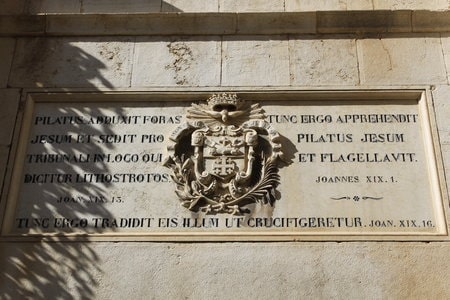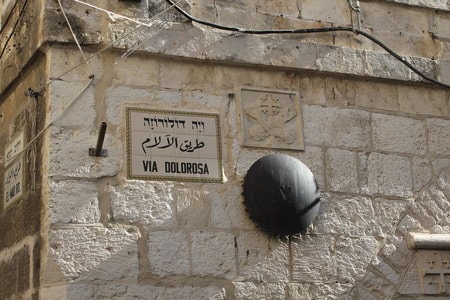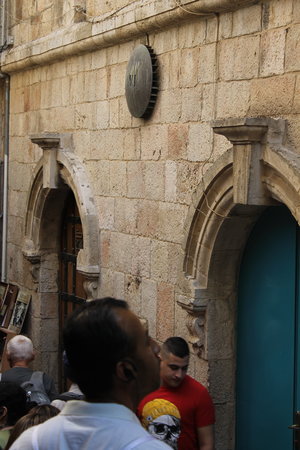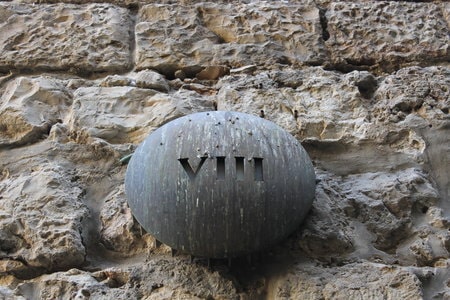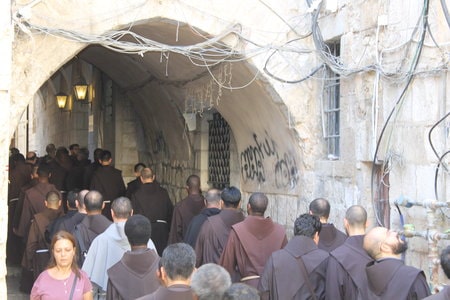Via Dolorosa
The Via Dolorosa in Jerusalem
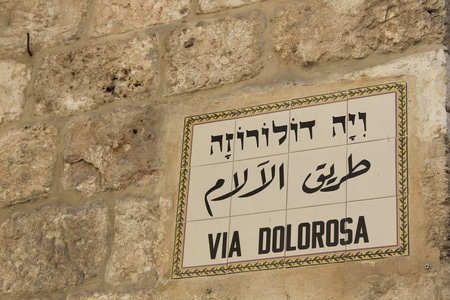 A major step in a Christian pilgrimage to the Holy Land, the Via Dolorosa (or "Path of Suffering") is the path of Jesus carrying his cross in the way to his crucifixion, imposed by Pontius Pilate.
A major step in a Christian pilgrimage to the Holy Land, the Via Dolorosa (or "Path of Suffering") is the path of Jesus carrying his cross in the way to his crucifixion, imposed by Pontius Pilate.
Over 500 meters long in the heart of the Old City in Jerusalem it includes 9 out of the 14 stations of the Christian Way of the Cross. It is therefore one of the holiest sites in Christianity. Each year, millions of tourists, curious and pilgrims visit it and relive the Passion of the Christ.
In the footsteps of the Christ
The route winds through several alleys and streets of the historic quarter of Jerusalem, from the Praetorium of Pontius Pilate, who pronounced the conviction of the Christ, to the Church of the Holy Sepulcher, which houses the last five stations of the Way of the Cross.
Processions of Franciscan monks take place every Friday from March to October. They begin in the Porte Saint-Etienne (or Porte de Lions), in the courtyard of the Umariya Primary Muslim School, where the first station is located. The Via Dolorosa leads the pilgrims through the alleys of the old town, where churches, monasteries, chapels, convents and other religious sites steeped in history follow each other. Each of the 9 stations is clearly indicated. Pilgrims can stop there and meditate on the sufferings of the Christ.
The Via Dolorosa is a path full of emotion that leaves no visitor indifferent. Reinforcing the faith of worshippers it offers to the curious the opportunity to visit a multitude of unique places, some of which are mentioned in the Bible.
Many sites of interest
Over the stations, the Via Dolorosa shows several sites of historical and / or religious value. The Basilica of Ecce Homo is the first of them. Dating back to the 19th century, this building was built where Pontius Pilate introduced Jesus to the people saying "Ecce homo" ("Here is the man", in Latin ").
Successively, the Chapel of the Flagellation, the stone bearing the fingerprint of Jesus and the Church of Saint Veronica (named after the woman who wiped the face of the Christ with a white veil) may be visited along the way before getting to the Church of the Holy Sepulcher.

